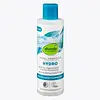What's inside
What's inside
 Key Ingredients
Key Ingredients

 Benefits
Benefits

 Concerns
Concerns

 Ingredients Side-by-side
Ingredients Side-by-side

Water
Skin ConditioningGlycerin
HumectantIsopropyl Isostearate
EmollientSodium Hyaluronate
HumectantAloe Barbadensis Leaf Juice
Skin ConditioningCitric Acid
BufferingSalix Alba Bark Extract
AstringentCamellia Sinensis Leaf Extract
AntimicrobialSaccharum Officinarum Extract
MoisturisingZingiber Officinale Root Extract
MaskingRose Extract
Skin ConditioningHamamelis Virginiana Leaf Extract
Skin ConditioningCitrus Tangerina Peel Extract
AstringentCitrus Medica Limonum Peel Extract
EmollientJasminum Officinale Flower/Leaf Extract
MaskingCitrus Aurantifolia Peel Extract
CleansingAnthemis Nobilis Flower Extract
MaskingVanilla Planifolia Fruit Extract
Skin ConditioningCitrus Aurantium Amara Flower Extract
RefreshingCitrus Aurantium Dulcis Peel Extract
Emulsion StabilisingRubus Idaeus Fruit Extract
AstringentCaprylic/Capric Triglyceride
MaskingPropanediol
SolventDecyl Glucoside
CleansingIsopropyl Shea Butterate
EmollientPhenethyl Alcohol
MaskingDodecane
PerfumingHexadecane
PerfumingSorbitan Oleate Decylglucoside Crosspolymer
CleansingCaprylhydroxamic Acid
Water, Glycerin, Isopropyl Isostearate, Sodium Hyaluronate, Aloe Barbadensis Leaf Juice, Citric Acid, Salix Alba Bark Extract, Camellia Sinensis Leaf Extract, Saccharum Officinarum Extract, Zingiber Officinale Root Extract, Rose Extract, Hamamelis Virginiana Leaf Extract, Citrus Tangerina Peel Extract, Citrus Medica Limonum Peel Extract, Jasminum Officinale Flower/Leaf Extract, Citrus Aurantifolia Peel Extract, Anthemis Nobilis Flower Extract, Vanilla Planifolia Fruit Extract, Citrus Aurantium Amara Flower Extract, Citrus Aurantium Dulcis Peel Extract, Rubus Idaeus Fruit Extract, Caprylic/Capric Triglyceride, Propanediol, Decyl Glucoside, Isopropyl Shea Butterate, Phenethyl Alcohol, Dodecane, Hexadecane, Sorbitan Oleate Decylglucoside Crosspolymer, Caprylhydroxamic Acid
Ingredients Explained
These ingredients are found in both products.
Ingredients higher up in an ingredient list are typically present in a larger amount.
Citric Acid is an alpha hydroxy acid (AHA) naturally found in citrus fruits like oranges, lemons, and limes.
Like other AHAs, citric acid can exfoliate skin by breaking down the bonds that hold dead skin cells together. This helps reveal smoother and brighter skin underneath.
However, this exfoliating effect only happens at high concentrations (20%) which can be hard to find in cosmetic products.
Due to this, citric acid is usually included in small amounts as a pH adjuster. This helps keep products slightly more acidic and compatible with skin's natural pH.
In skincare formulas, citric acid can:
While it can provide some skin benefits, research shows lactic acid and glycolic acid are generally more effective and less irritating exfoliants.
Most citric acid used in skincare today is made by fermenting sugars (usually from molasses). This synthetic version is identical to the natural citrus form but easier to stabilize and use in formulations.
Read more about some other popular AHA's here:
Learn more about Citric AcidDecyl Glucoside is a glucose-based surfactant and emulsion stabilizer. It is created by reacting glucose with the fatty acids from plants.
Surfactants help clean the skin by trapping oil, sebum, and dirt to be washed away. As an emulsion stabilizer, it stabilizes the ingredients in a product by preventing them from separating.
This ingredient is biodegradable and non-toxic. This ingredient is commonly found in baby shampoos.
Decyl Glucoside is sometimes used to stabilize the UV filter Tinosorb.
Learn more about Decyl GlucosideGlycerin is already naturally found in your skin. It helps moisturize and protect your skin.
A study from 2016 found glycerin to be more effective as a humectant than AHAs and hyaluronic acid.
As a humectant, it helps the skin stay hydrated by pulling moisture to your skin. The low molecular weight of glycerin allows it to pull moisture into the deeper layers of your skin.
Hydrated skin improves your skin barrier; Your skin barrier helps protect against irritants and bacteria.
Glycerin has also been found to have antimicrobial and antiviral properties. Due to these properties, glycerin is often used in wound and burn treatments.
In cosmetics, glycerin is usually derived from plants such as soybean or palm. However, it can also be sourced from animals, such as tallow or animal fat.
This ingredient is organic, colorless, odorless, and non-toxic.
Glycerin is the name for this ingredient in American English. British English uses Glycerol/Glycerine.
Learn more about GlycerinPropanediol is an all-star ingredient. It softens, hydrates, and smooths the skin.
It’s often used to:
Propanediol is not likely to cause sensitivity and considered safe to use. It is derived from corn or petroleum with a clear color and no scent.
Learn more about PropanediolSodium Hyaluronate is hyaluronic acid's salt form. It is commonly derived from the sodium salt of hyaluronic acid.
Like hyaluronic acid, it is great at holding water and acts as a humectant. This makes it a great skin hydrating ingredient.
Sodium Hyaluronate is naturally occurring in our bodies and is mostly found in eye fluid and joints.
These are some other common types of Hyaluronic Acid:
Learn more about Sodium HyaluronateWater. It's the most common cosmetic ingredient of all. You'll usually see it at the top of ingredient lists, meaning that it makes up the largest part of the product.
So why is it so popular? Water most often acts as a solvent - this means that it helps dissolve other ingredients into the formulation.
You'll also recognize water as that liquid we all need to stay alive. If you see this, drink a glass of water. Stay hydrated!
Learn more about Water